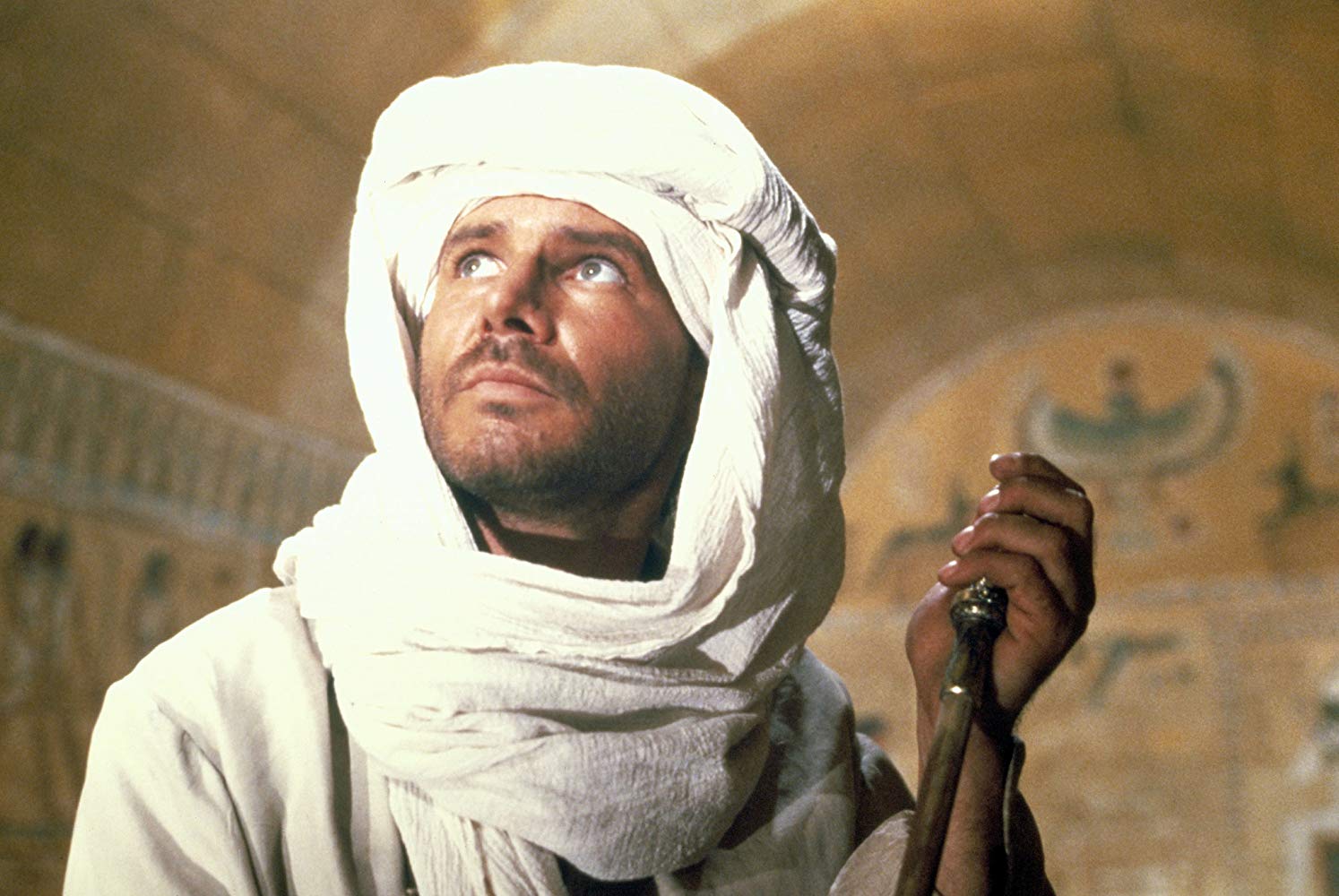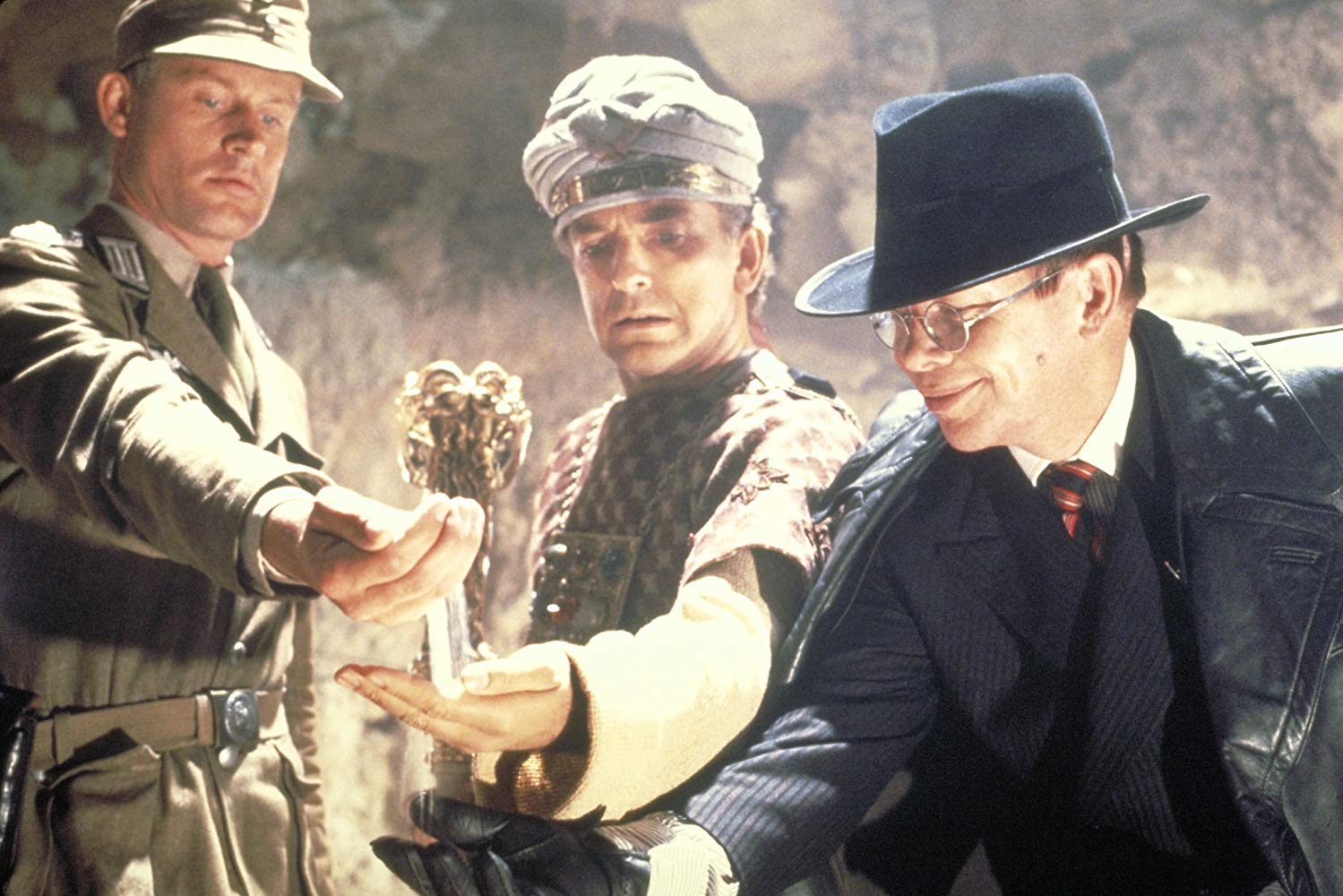January 30, 2019
What if ‘Raiders of the Lost Ark’ was real? A rabbi, an archaeologist, and more weigh in
I recently re-watched Indiana Jones and the Raiders of the Lost Ark for the umpteenth time and as someone who loves melding his religious/cultural background with pop culture, I began to wonder: How would the world react if the Ark of the Covenant really was discovered?
It goes without saying that every rabbi, archaeologist, and museum worth their respective accreditations would want to get their hands on the find, but how would they go about it? And even if they could gain access to the relic that held the broken and new sets of Luchot (aka the two stone tablets upon which the Ten Commandments were inscribed), would they be able to approach it?
To begin my research, I turned to my synagogue’s rabbi, Ephraim Epstein, who was more than happy to help me in this fun speculative exercise. As he told me, “a delegation of the most-respected rabbis in the world” would need to be formed in order to accomplish the following three things:
A) Go inspect the Ark to verify its authenticity.
B) Create an international committee of world Jewry to decide where it should go [as well as] when and how it’ll get there.
C) A PR committee would be formed to help verify that indeed Jews have been in Jerusalem for over 3,000 years.
“That would just be a start,” he added.
Megan Sauter, the managing editor of Biblical Archaeology Review, who is currently on an Israeli dig in Tel Shimron, offered up her own scenario for how the Ark would be authenticated by members of the archaeological community:
“Biblical scholars, archaeologists, and scientists would work together to try to authenticate it by comparing the discovery to the Ark’s description in the biblical text; looking at parallels for its iconography and construction throughout the ancient Near East; and using Carbon-14 dating to verify that it dates to the right period.”
Ok, so let’s say the greatest rabbinical scholars in the world form the aforementioned delegation and gain permission to inspect the Ark from whatever country ends up excavating it. According to Sauter, the artifact would legally belong to the nation in which it is found. The next question would be if they could even get near such a sacred object, which had the power to kill a grown man in the time of the Beit Hamikdash (the Jewish Holy Temple) in Jerusalem.
While Hashem (a Hebrew name for God that literally translate to “The Name”) looks more favorably upon rabbis than He does Nazis, the whole face-melting thing may be still be the fate awaiting any individual other than the Kohen Gadol (Jewish High Priest). The turban-like headpiece and jeweled chest plate worn by Paul Freeman’s Belloq near the end of Raiders is a pretty accurate depiction of the ceremonial garb of the Kohen Gadol, but it wasn’t enough to prevent him from facing the terrifying wrath of the Almighty.
“The question would be if it could be touched, because we are Tamei [spiritually impure] and once something was dedicated as kodesh it remains that way always,” Rabbi Epstein continued. “We would need to benefit from the ashes of the Parah Adumah [the rare and sacred red cow] before we could handle it. While it would only be operable in its holy spot, there may be embers if holiness is still palpable.”
For those of you who didn’t go through 18 years of Orthodox Jewish day school like me, here’s a little history lesson. The Ark of the Covenant (or “Aron HaBrit” as it’s known in Hebrew) was housed in a special room in the Beit Hamikdash known as the “Kodesh Hakadoshim,” or “Holy of Holies.”
That’s not an overstatement either, because that was the place in which the Schina (divine presence of God) is said to have rested, making it impossible to enter the room without the proper preparations. The Holy of Holies could only be accessed by the Kohen Gadol on one day out of the entire year, Yom Kippur. And even then, it wasn’t a foolproof experience. In fact, the High Priest needed to have a rope tied around his waist just in case he was killed by the Schina. Since no one else could enter the room, his body would have to be retrieved by tugging on the rope.
History lesson over. Well, kind of.
In Raiders, the Ark is discovered by Professor Henry Jones Jr. (Harrison Ford) and his jovial buddy, Sallah (John Rhys-Davies), in snake-filled chamber in the lost Egyptian city of Tanis; Tanis itself was uncovered by the Nazis who didn’t have enough pieces of the puzzle to dig in the right place. When Jones is recruited by the American government at the start of the movie, he and Marcus Brody (Denholm Elliot) postulate that the pharaoh known as Shishak may have brought the Ark back to Egypt after his invasion of Jerusalem in 980 B.C. This theory eventually turns out to be correct in the film, but in reality, the Ark is probably still in Jerusalem, buried somewhere beneath the Earth.
That being said, I’m one of those crazy conspiracy theorists who likes to think it may be among the artifacts gathered in some holy vault under the Vatican in Rome. However, the possibility of the Ark remaining in Israel was imparted to me by Moriyah Shapiro, an Israeli tour guide in the ancient city of Shiloh in the West Bank. Shiloh was one of the first places in Canaan settled by the Jews who, fresh off their freedom from slavery in Egypt, ended up wandering around the desert for 40 years.
“Shiloh was the first place for the [Ark]. [It resided] here [for] 369 years,” Shapiro told me over the phone. “According to tradition, it should [now] be hidden under the Temple mountain.”

Moriyah was in agreement with my local rabbi in terms of not being able to approach such a divine artifact.
“I think we all have to very, very careful with it,” she explained. “Even in the time of [King] David, the key people died because they approached it too much—not in an appropriate way. Only holy people could touch it and only in a certain way.”
And remember those two angels facing each other on the lid?
“[Tradition] says that the Holy Ark had two angels on top of it and when we were in a good situation with God, they were connected to each other and when we were not, they were not facing each other. It really resembles the love between God to His people,” Shapiro said.
If the Ark was found and those angels were facing away from one another, then we’d have, in the words of Desi Arnaz, “some splainin’ to do.” When asked how Jews around the world might react to the find, Moriyah theorized the following:
“There’s a group of people [who] for a long time, [have been] working very hard to bring the Temple back to our minds … I think … people will wake up and understand that there is something happening here. We have to maybe come back to Israel and start to connect with God again. That’s what I believe.”
Unlike Doctor Jones, Ms. Shapiro does not see any reason for such an object to be shown off in a museum if it were ever unearthed.
“I don’t think it would be in a museum,” she finished. “I think it would be in the Temple … I think it’s something much bigger than a museum.”

For argument’s sake, let’s say the Ark could be handled by regular folks, like you and me; that the passage of thousands of years caused the devastating holy power within and around the Ark to go temporarily dormant. I might go to Jewish Hell (aka “Gehenem”) just for writing that such a thing is even possible, but let’s entertain the notion for purely scholarly reasons, using the basis that our low level of spiritual purity has rendered the Ark inert until the day of the Messiah’s return.
Here’s the scenario: the Ark is discovered in a time before the coming of the Messiah (like it is in Raiders) and can be handled by average folks who won’t drop dead just from looking at it. Discounting Moriyah’s very valid protestation against museums for just a moment, how would a historical institution go about acquiring such a precious artifact for display to the public?
For a federalized museum like the Smithsonian, it would be rather easy, especially since the U.S. government took possession of the Ark at the end of the film. Yes, I know what you’re gonna say: They locked it away at Area 51 with no intention of letting the public get wind of it, but if the news was leaked, the thing would have to be made available to the world, right?
There’s no doubt that there’d be a Jewish and archeological lobbies pushing to study the long-fabled Ark. Remember, the crate holding the Ark was smashed open in Indiana Jones and the Kingdom of the Crystal Skull. What if someone found out about it when a government clean-up crew was sent to the warehouse to set things right? Maybe one of the janitorial staff was Jewish and, unable to keep quiet about the most important artifact in the history of his 5,000+ year culture, leaked it to the press?
Let’s say the lid (pun intended) is blown off this major cover-up. Even then, the American government (although it wouldn’t have any claim it since the Ark is somewhere in the Middle East) would most likely insist on keeping the Ark under its purview and security. That’s where the Smithsonian comes in, particularly the National Museum of American History, which currently houses Indy’s iconic hat and whip.
“Because the Smithsonian is a trust instrumentality of the federal government, we can request a government transfer if the other agency is willing,” Melinda Machado, the museum’s director of Communications, told me over email. “For example, one of our curators was searching for the ‘Crash Test Dummies’ costumes worn by the actors who played them in the informational ads encouraging Americans to wear seat belts. They were finally located in a warehouse used as storage by the advertising company that produced the ads, but the costumes belonged to the Department of Transportation/National Highway Transportation Safety Administration. In this case, we were able to do a transfer to acquire some of the original artifacts for the museum.”
The real question is, would that agency—the one responsible for storing holy arks and dead alien carcasses—be willing? As I said before, they probably wouldn’t have much choice after the public outcry following the discovery that the Ark was 1) real and 2) collecting dust in the Nevada desert. Fine, this ultra-secret government agency ends up relenting to the pressure and allows the Smithsonian to exhibit the Ark of the Covenant in Washington, D.C. That’s probably where it would stay for the foreseeable future, but that doesn’t mean a prestigious Jewish-centric museum couldn’t get its hands on it for display purposes.
“The Smithsonian does lend its collection to accredited museums and there is a process for that. As for the federal government at large, I’m not sure where you would even begin to check,” added Machado.
“I think many museums would like to display the Ark,” Sauter explained. “Similar to the treasures from King Tut’s tomb, it would probably go on a world tour. Of course, if the Ark appeared on the black market—and did not come from an archaeological excavation—that would change things. An object’s provenance (find spot/place of origin) provides a lot of information about the object itself. If the Ark’s provenance were unknown, some museums may hesitate to display it—to avoid fueling looting and the black market.”
Getting back to the theoretical Smithsonian display, global scholars craving to study the artifact in person would have to flock to our nation’s Capitol in order to get up close and personal with it. Even then, however, it wouldn’t be so easy.
“We do welcome researchers to visit the collection. With objects that are on display it becomes more complicated and would depend on if we need to remove it from view,” said Laura Duff, a Film and Media Manager in the museum’s Office of Communications and Marketing.
“The majority of the archaeological community would be excited to find the Ark,” finished Sauter. “Those who think the Ark of the Covenant never existed would certainly be surprised, but I think even they would welcome such a momentous discovery. A good number of archaeological books would have to be revised in light of the find.”
Well, one thing is for certain: We’ll know for sure after Area 51 is broken into on Sep. 20!

